Results 1 to 10 of 12
-
06-12-2014, 02:16 PM #1
 Thuringian Waterwhetstones – some interesting geological issues
Thuringian Waterwhetstones – some interesting geological issues
When we talk about the soft Thuringian Waterwhetstones like the Escher labeled stones we are talking about slate stones. The stones exist more precisely of mud-slate, a material that was built as deposits of a deep, calm see. Minerals and plants sank to the ground, were covered by mud and through millions of years these slate stones were build with temperature and pressure of the earth tectonics.
People often don’t like to hear that these stones are made of slate, a material that is used for house building and other common things. But if you have once been in the slate mountains of Thuringia and see all this slate rocks over thousands of square miles and then remember that there are only very small quarries were you could have found this wonderful stuff that fits exactly for a whetstone – it’s fantastic!
It might be interesting to hear that the slate horizons in these quarries consist of up to 250 different layers consisting of pure whetstone layers, simple mud-slate layers, brown slates greywacke and finally quartz layers. About 160 layers were defined as pure whetstone layers but at the end less than maybe two dozen of them were feasible and could be used to make whetstones. The layers in total had all different thinkable colors from yellow-white through green, blue also reddish and brow to black.
For the original Thuringian Waterwhetstones only the yellow, green and blue layers were mined. They were divided into the well know quality levels yellow green – light green – blue green and (dark) blue.
There is often the question if yellow layers exist and the answer is a straight yes. There are about 6 yellow layers the miners had given names too, so they surely had been of good quality and were quarried as whetstones. Some expressive names were “flammiger Gelber” or “Markasitengelber” or also “Tuffengrüner”.
The yellow stones were also sold under the quality yellow-green, I don’t have seen a label yellow in all the times. But I also think that all qualities contain not simply one layer (color), but a certain range of colors. So the yellow green quality contains whitish, yellow and soft green ones, the light green quality stands more for all shades of gray, etc.
The most special quality for me seems to be the blue-green stones because they are indeed very special colored and I also think they are the most rare ones to find.
That quartz layers are existing next to the whetstone slates is comprehensible, because quartz particles are the abrasive material in the whetstones. But you can see the quartz layers are really “docking” on the slate layers sometimes. The following picture shows an example:
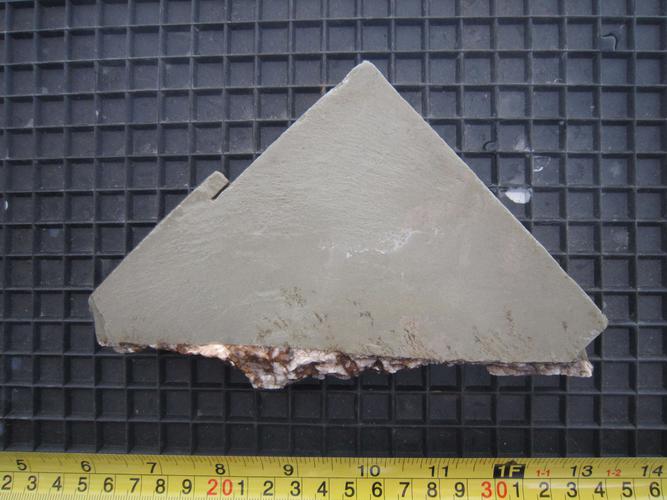
A perfect two toned natural combination whetstone light green – blue that was cut for whetstones until the quartz layer was reached. You can also see the natural perfect straight sharp end of the stone were the quartz is sitting on.
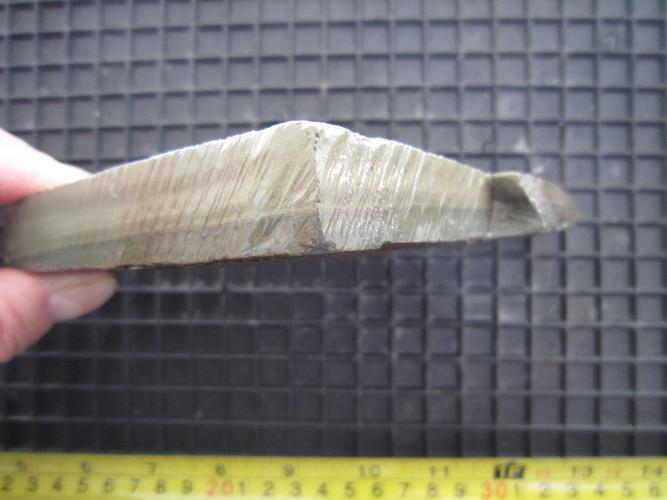
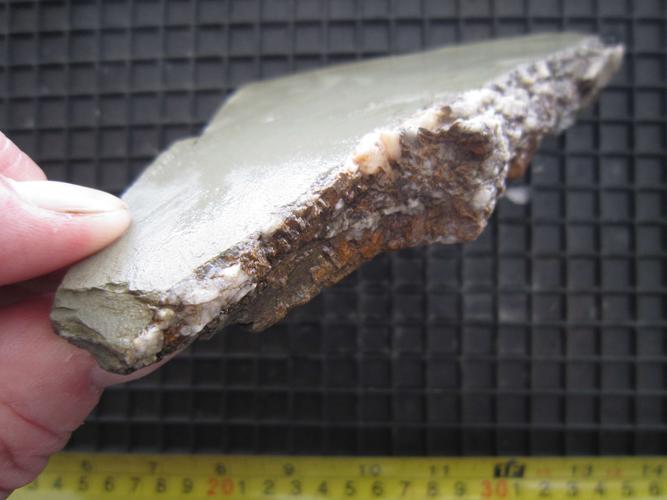
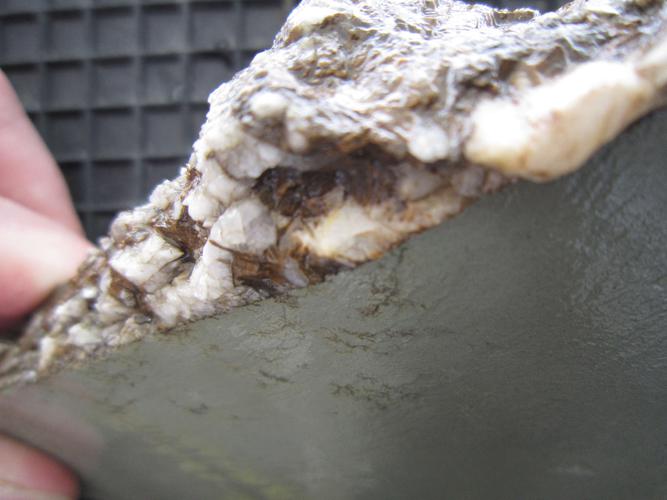
On the backside you can see the typical horny layer that contains a lot of iron as oxide, sulphide and elemental too.
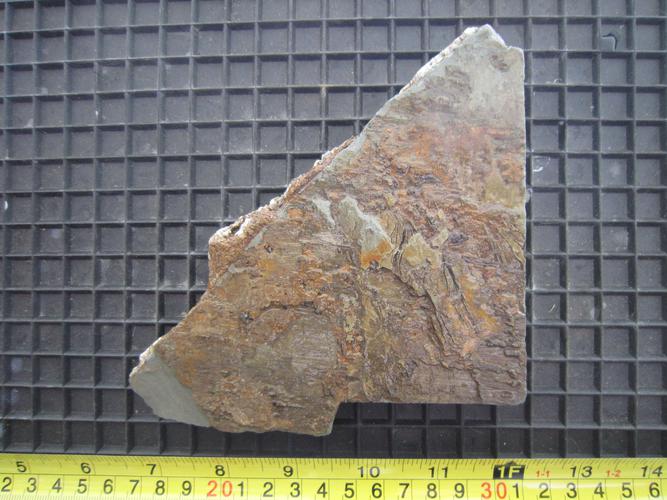
-
The Following 26 Users Say Thank You to hatzicho For This Useful Post:
25609289 (06-13-2014), Adam G. (06-12-2014), adrspach (06-12-2014), AljuwaiedAK (11-18-2015), Bram (06-12-2014), ChopperDave (11-18-2015), Cobre (06-12-2014), doorsch (11-17-2015), Double0757 (06-13-2014), Galaxy51 (06-12-2014), JimmyHAD (06-14-2014), JTmke (06-12-2014), Leatherstockiings (06-12-2014), Margeja (06-13-2014), MichaelS (06-14-2014), mike1011 (06-12-2014), Neil Miller (06-12-2014), Piet (06-12-2014), Razorfaust (11-16-2015), RezDog (06-13-2014), Slawman (11-16-2015), Steel (09-12-2018), Utopian (06-12-2014), Vasilis (06-14-2014), WW243 (06-14-2014), xiaotuzi (07-23-2017)
-
06-12-2014, 02:32 PM #2

Thank you for the post!! Very interesting, and insightful.
We have no control of what other people do or say to us, but we have control to how we REACT !! GOD BLESS
-
06-12-2014, 02:35 PM #3

You will find also in the border layers sometimes beautiful fossil plants.
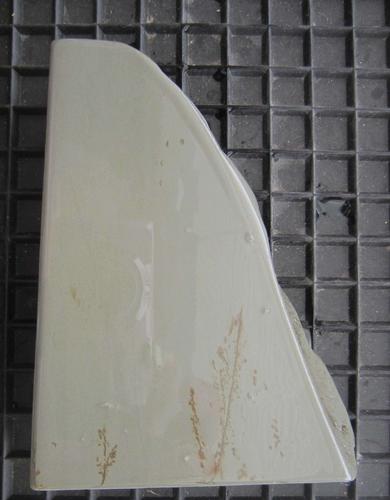
Normally you don’t find any animal fossils in the whetstone layers. But sometimes there are some surprising exceptions.
I prepared the following bout for a friend when I recognized that the darker strains and spots are more than just color discrepancies.
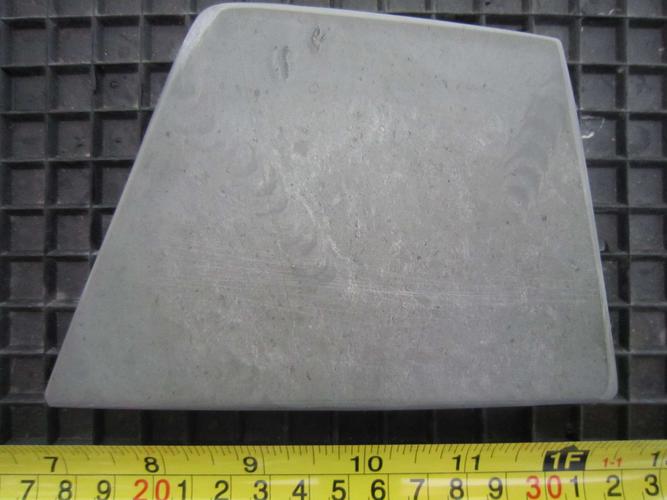
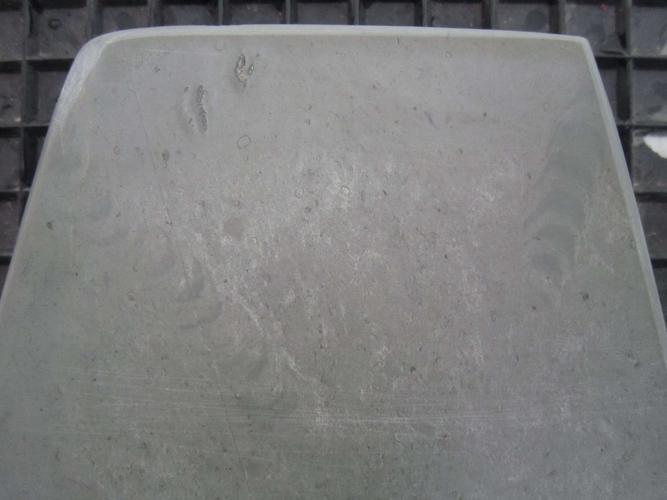
You can see two large fossils on the left and right of the stones (in fact these are only the “negatives” - images of fossils) and two smaller ones in the left upper corner.
Under microscope with magnification of 200 you can see details:
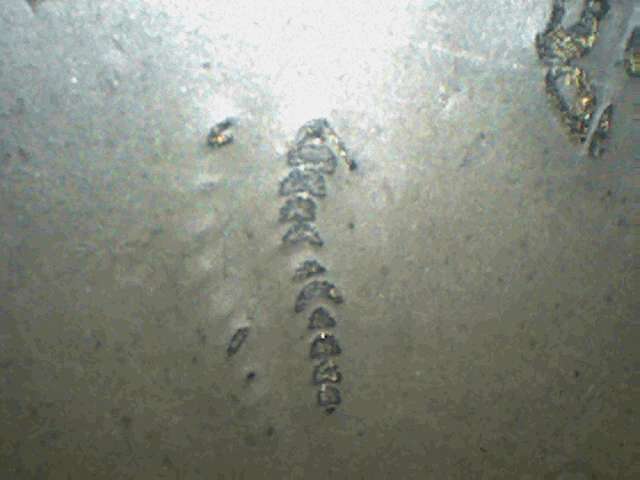
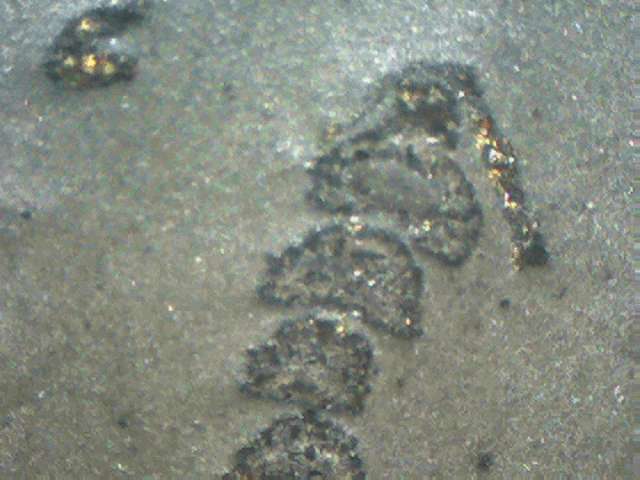
Beautiful find, but also a great hone!
-
The Following 8 Users Say Thank You to hatzicho For This Useful Post:
25609289 (06-13-2014), AljuwaiedAK (11-18-2015), doorsch (11-17-2015), Leatherstockiings (06-12-2014), Neil Miller (06-12-2014), RezDog (06-13-2014), WW243 (06-14-2014), xiaotuzi (07-23-2017)
-
06-12-2014, 03:05 PM #4Senior Member

- Join Date
- Mar 2012
- Posts
- 273
Thanked: 43
Thanks for the detailed info.
I have been playing with some hardware store variety of slate that originates in India.
I haven't tried honing razors on them but used on knives after a bevel set gets them scary sharp. The knives are far more aggressively honed when a very thick slurry is used and then finished with just water. Also I found that it is very difficult to use an edge leading stroke because the slate from India is pretty soft.
I find the quartz inclusions that are in your photos and the quartz layers as well. I need to look through roughly a hundred pieces or so to find a suitable one.
Also I have found the yellowish, gray, blue green, and blue colors with the "slate blue" to be by far the most common. So far I haven't found a single piece that is of a fine of a grit to use for razor finishing but it has been fun hunting for one.
-
06-12-2014, 10:44 PM #5Senior Member

- Join Date
- Apr 2014
- Location
- Yorkshire , England
- Posts
- 356
Thanked: 44
Interesting stuff, thank you for the read

-
06-12-2014, 11:10 PM #6

Fossils are typically found in limestone and shale. The stones you are talking about were first shale and that is when the fossils formed and the plant material was impressed into the soft layers before the shale even formed. if you are seeing fossils it ain't slate. The metamorphic process would destroy the fossils unless the process was first starting and in that case you would see deformation in the fossils. it's kind of like the coal formation process where it goes from Peat to Lignite to Bituminous to Anthracite and the sub and semi categories in between just that with metamorphic rocks they don't categorize them like that. And you can get fossils in coal too but only in the early stages of formation.
No matter how many men you kill you can't kill your successor-Emperor Nero
-
The Following 2 Users Say Thank You to thebigspendur For This Useful Post:
Double0757 (06-13-2014), hatzicho (06-13-2014)
-
06-14-2014, 08:08 AM #7

Thanks Peter for your addition here....are these names for the yellow Layers you mentioned known in any Literature? I did not found any source with the names...
Or Are these names the people working in the quarries just given to them?███▓▒░░.RAZORLOVESTONES.░░▒▓███
-
06-14-2014, 02:21 PM #8

@ Doorsch
The local historian Dr. Max Volk did a lot of research on the geology of the thuringian slate mountains between 1930 and 1960. He also investigated the Thuringian whetstones at a time were some of the old mines had still been in operation.
So the following picture shows a part of a table by Dr. Volk from one of his works about the devonian age slate occurance, where he mentioned the different layers (indicating layer no. 88 to no. 77) by color and some names the layers were given by the miners:
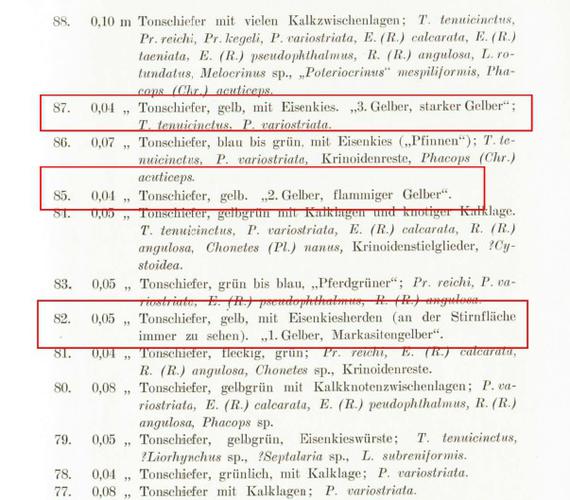
Also mentioned is a short description and the thickness of each layer which is between 1 and 10 cm most of the time.
-
The Following User Says Thank You to hatzicho For This Useful Post:
doorsch (11-17-2015)
-
11-16-2015, 01:22 PM #9

Here is one of the stones which might fit into one of these yellowish layers:
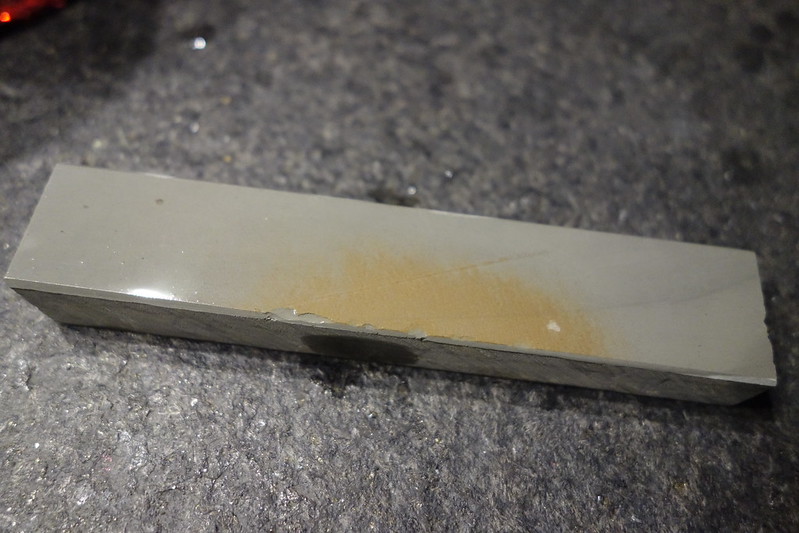
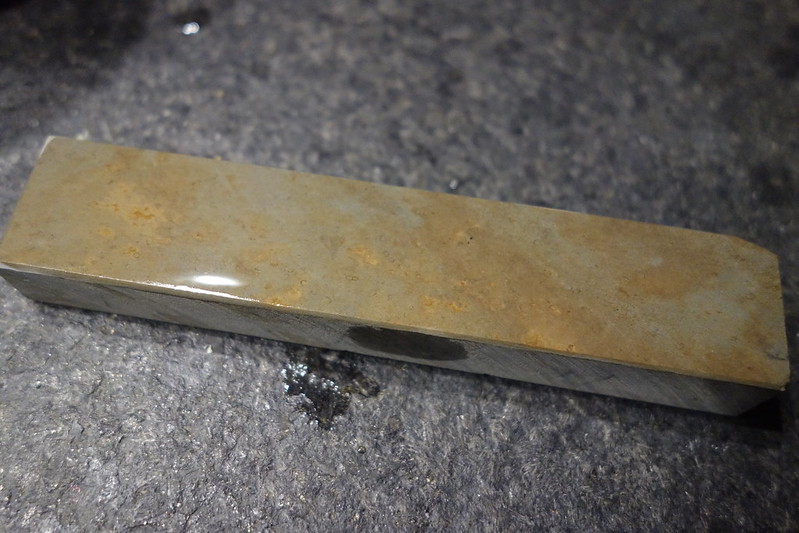 ███▓▒░░.RAZORLOVESTONES.░░▒▓███
███▓▒░░.RAZORLOVESTONES.░░▒▓███
-
11-16-2015, 02:22 PM #10Senior Member


- Join Date
- Aug 2014
- Location
- East Central Illinois
- Posts
- 782
Thanked: 101
My Great Uncle Harvey owned a coal mine in Central Illinois near Petersburg. Near the bottom of the main shaft there was a huge fern inpression in the shale of the roof. I remember it as a small child back in the early 60's. I would say it was 3 or 4 Ft. across.
Slawman


 43Likes
43Likes LinkBack URL
LinkBack URL About LinkBacks
About LinkBacks






 Reply With Quote
Reply With Quote
